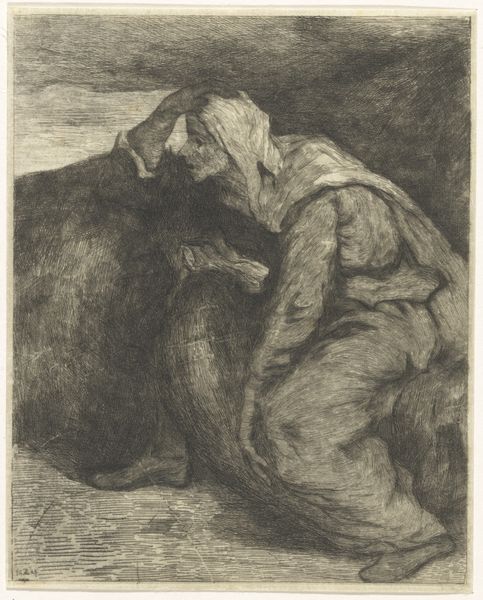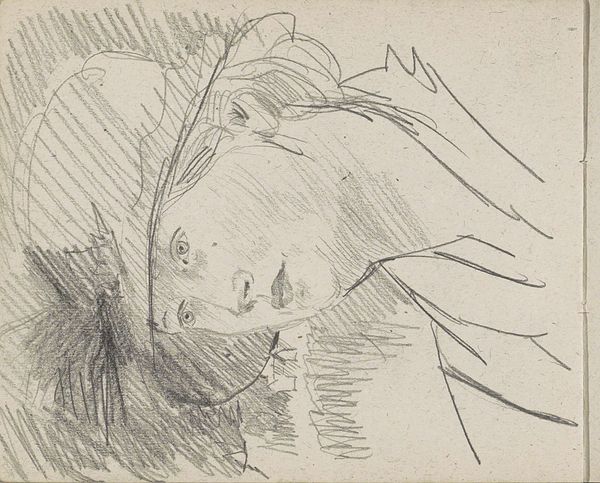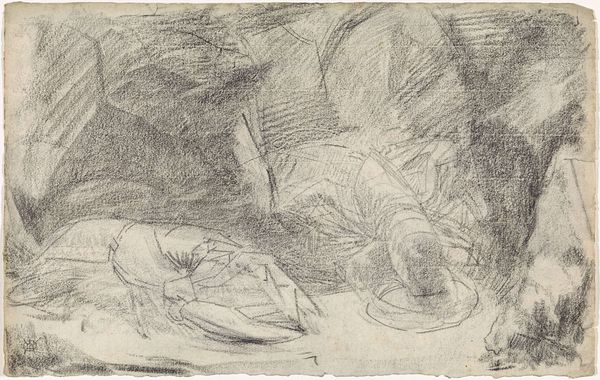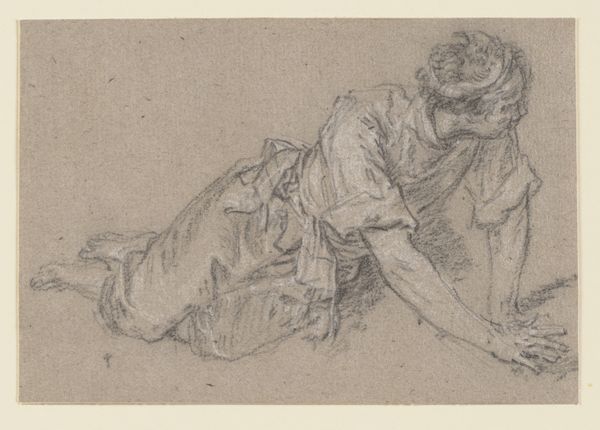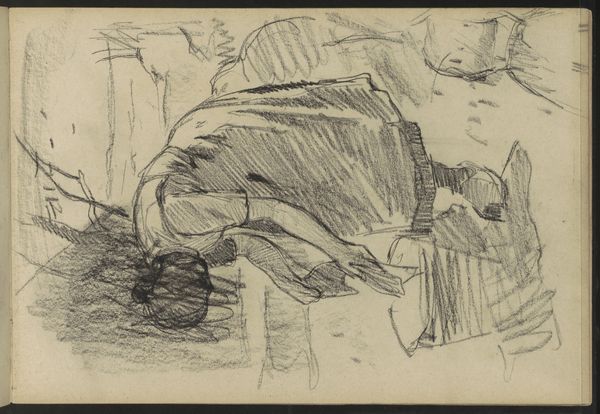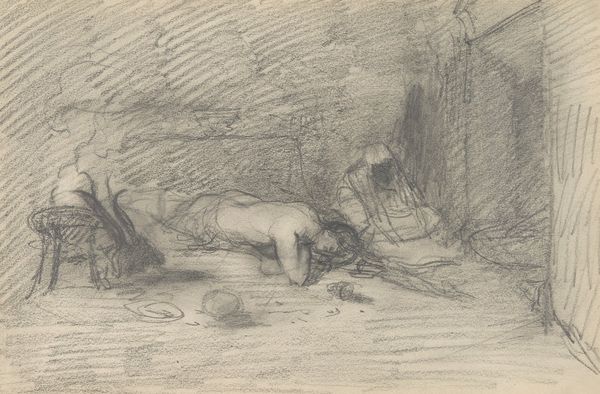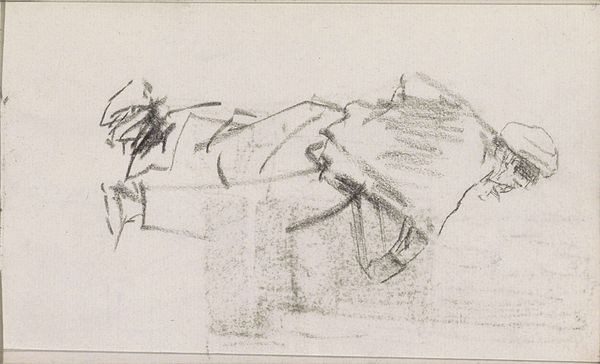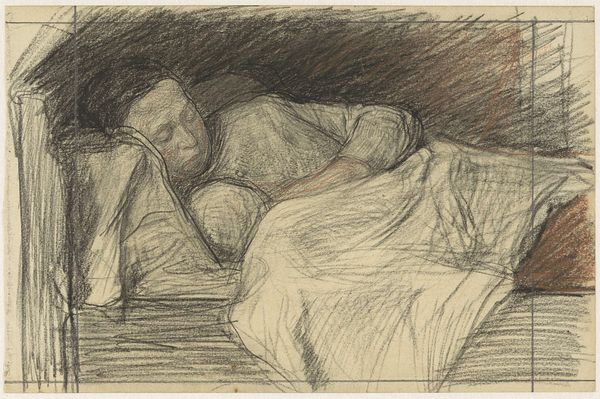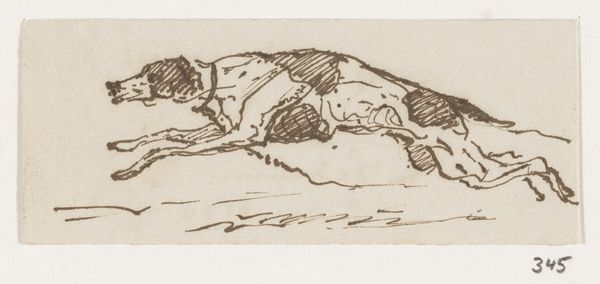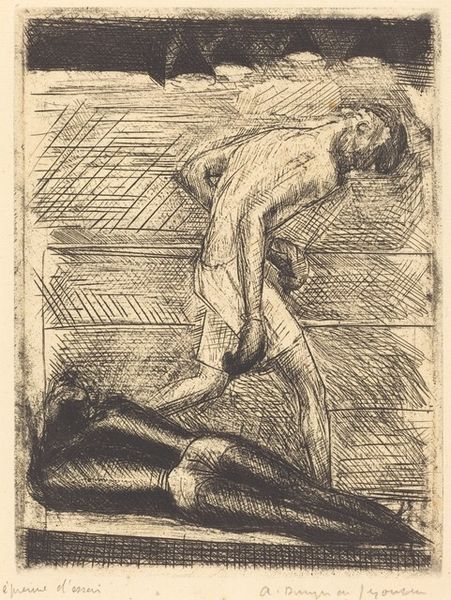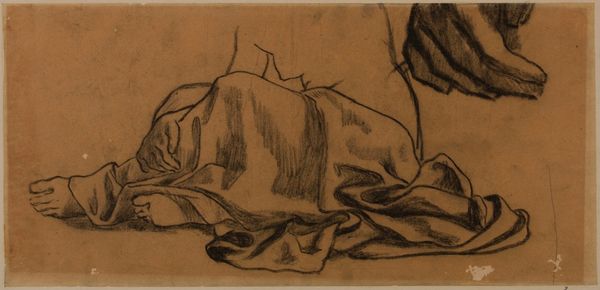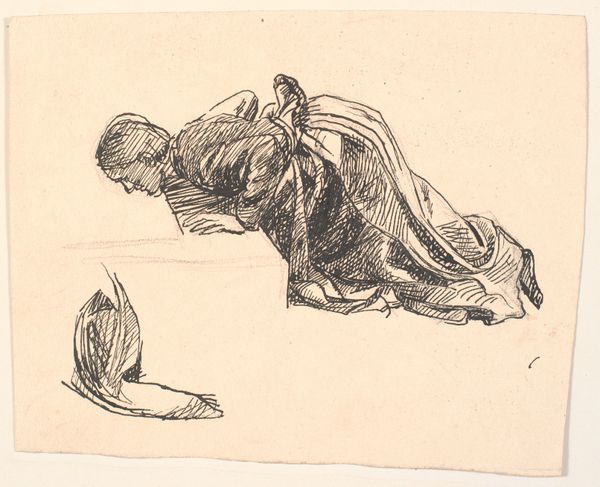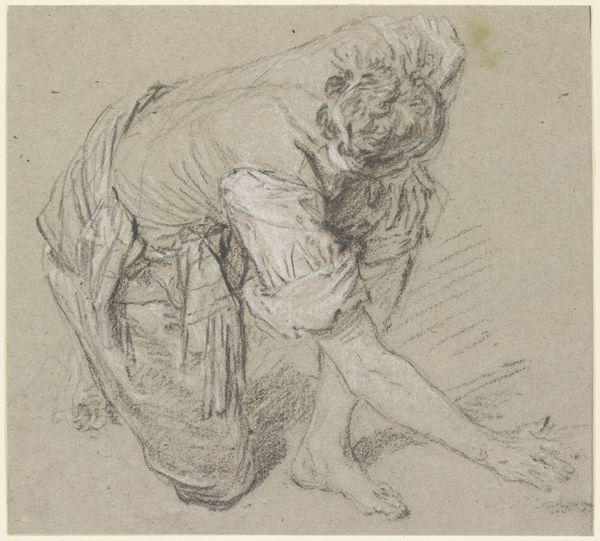
drawing, print, etching
#
drawing
# print
#
etching
#
landscape
#
figuration
#
pencil drawing
#
pen work
#
realism
Copyright: National Gallery of Art: CC0 1.0
Curator: This etching, entitled "Fagot-gatherer," is by Alphonse Legros. It depicts a figure crouched in what appears to be a field. Editor: There's such a somber mood evoked by the work. The density of the linework almost feels claustrophobic, focusing my attention entirely on this solitary figure’s hunched posture. Curator: It resonates, doesn't it? Legros, often focusing on the plight of the working class, situates this figure—likely a peasant—within a broader narrative of labor and subsistence. We must ask, what does it mean to depict the daily grind in such a way? Editor: I find the symbol of the "fagot"—the bundle of sticks—to be quite potent here. Wood, fire, warmth…These represent fundamental human needs. The figure gathering these fagots seems like an act of desperate survival, recalling cyclical imagery of human dependency on earth's elements. Curator: Exactly. It's through art that we may explore societal dynamics that concern labor and basic needs. And in thinking about identity, what narrative can be formed about rural existence and how can this inform ideas on current political views regarding class? Editor: Indeed. It feels ancient somehow. This posture of gathering also puts me in mind of ancient deities like Demeter, but drained of any inherent power, forced into manual toil. Perhaps also biblical allusions, where gathering refers not only to material survival, but also to faith. Curator: Such intertextual symbolism underscores how seemingly simple scenes are so often reflections on cultural power and identity struggles. By analyzing the intersection of poverty, gender, and class representation in artwork from Legros and his peers we can form links to contemporary socio-political discussions. Editor: For me, what lingers is this pervasive sense of fatigue and relentless necessity. The image becomes a visual signifier for something both profoundly universal and deeply personal in the experience of working and staying alive. Curator: So it evokes empathy, and connects us to people's conditions in life through artistic exploration. A key to connecting current sociopolitical situations through examination of artwork from the past. Editor: Indeed. It's through those connections that we recognize our own place within a grand human tapestry.
Comments
No comments
Be the first to comment and join the conversation on the ultimate creative platform.
